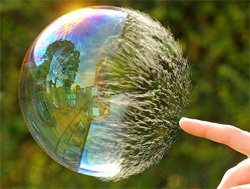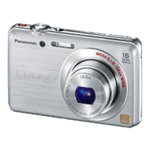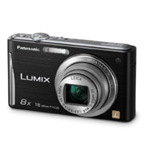A Guide to ISO Settings on Your Digital Camera
 By Brian Jones
By Brian Jones
If you have ever visited an aquarium, then you know it’s difficult to get a good shot of the fish in the tanks awash with light and color because the room is otherwise really dark. A shot taken in auto mode might turn out dark and underexposed, and using a flash could cast an annoying glare on the glass of the tank. There is a way, however, to get a bright, clear shot of the fish with just a little graininess: by increasing the ISO on your camera to 800 or higher.
In terms of cameras and photography, ISO stands for International Standards Organization and relates to the film speed. The ISO level determines the amount of sensitivity the camera’s lens has to light when the shutter opens. Most basic digital cameras have ISO settings of 100, 200, 400, and 800, but more advanced cameras and SLR models can have an ISO range up to 1600.
It can be tricky taking photographs in low light settings. In the regular auto mode, if you don’t use a flash, the image can turn out blurry. A faster shutter speed would decrease the blurriness, but it would also let in less light, producing a dark, underexposed picture. The solution to this problem lies with the ISO level. By increasing the ISO, the lens becomes more sensitive to light even in a short shutter time, giving you a brighter, sharper shot.
While you might think it would be best to use the highest ISO setting possible to get the brightest shot, that isn’t the case. In daylight, a high ISO would give you a washed-out, overexposed picture. A high ISO also increases the noise, or graininess, in the picture. Instead, you should go with the lowest ISO setting that still gives you a clear picture with proper exposure. But how do you know which ISO level to use? It depends on the lighting.
| ISO | Lighting |
|---|---|
| 100 or lower | Use this setting for brightly-lit areas and sunny outdoor shots. |
| 200 | On overcast days or in dim lighting, this setting will give you a clearer shot with minimal noise. |
| 400 | Ideal for indoor shots or outside in the evening, whether or not you’re using a flash. You’ll see some noise in the images. |
| 800 and higher | Use this setting at night or in low lighting. Generally best used only with an SLR camera. Basic cameras won’t be able to avoid grain with such a high ISO. |
Most SLR and some basic digital cameras have an adjustable ISO button in plain sight. If not, you can refer to the model’s user manual or search for it in the menu options. A higher ISO gives you more noise, but that’s the trade-off for having a sharp shot at the proper exposure.
 |
Brian Jones has had a passion for photography and anything related for the majority of his life. One photography class in high school was all it took to get hooked on everything to do with the subject. He became more focused on learning about camera… See more about Brian |
More Camera Articles
Digital Zoom vs. Optical Zoom: What’s the Difference?

Many digital cameras include both digital zoom and optical zoom. It’s helpful to understand the difference between these two zooming features when you’re trying to get a close-up view of something far away. Optical zoom maintains a high clarity as … [more]
Related Top 10 Lists
Top 10 Point and Shoot Cameras

Digital point and shoot cameras have come a long way since their beginnings. These cameras combine extreme portability with the newest technologies, like image stabilization, to capture the best looking image easily. We selected the 10 best point and shoot cameras based on the … [more]
Top 10 Digital SLR Cameras

The most important factors that we looked for in selecting our top 10 digital SLR cameras included: 1. Megapixels, 2. Video and audio quality, 3. Button and menu interface, 4. Battery life, 5. Anti-shake technology, 6. ISO level and minimal noise, 7. LCD screen size and articulation … [more]
Top 10 Compact Cameras

As we chose the top 10 compact digital cameras, we considered a number of factors that set the winners apart from the rest. These qualities include: 1. Number of megapixels to produce sharp, detailed images, 2. Optical zoom that doesn’t degrade the picture quality, 3. Lightweight, slim, portable design, 4. Large and … [more]
Filed Under: Digital Cameras























